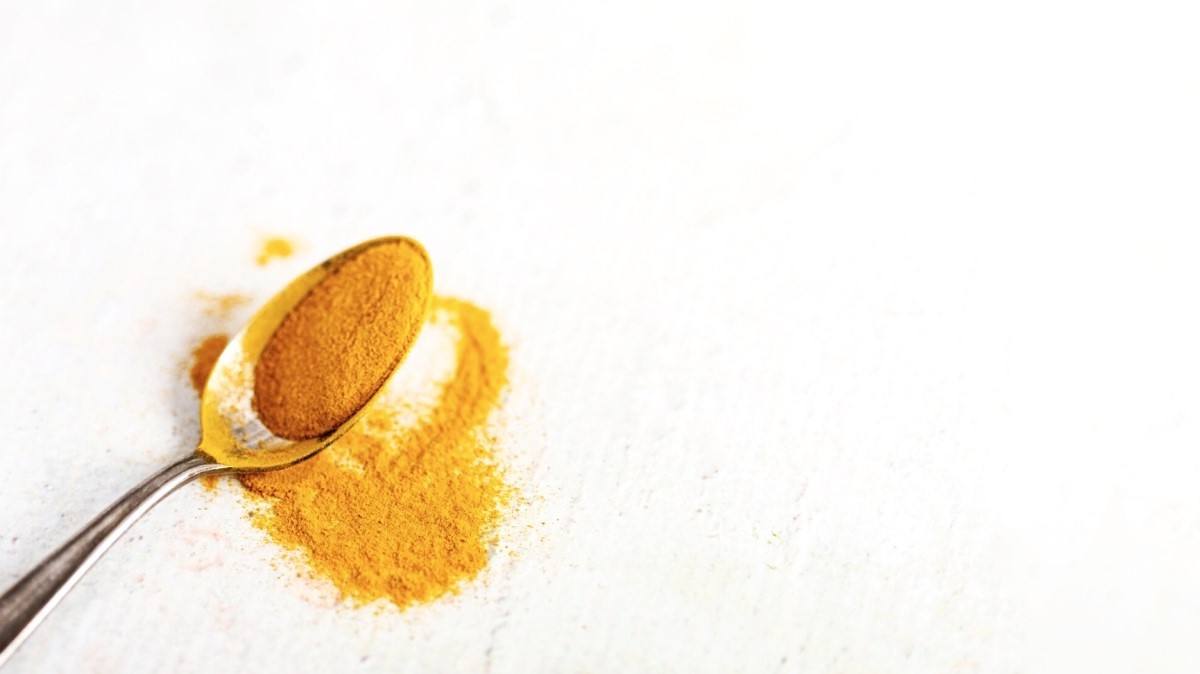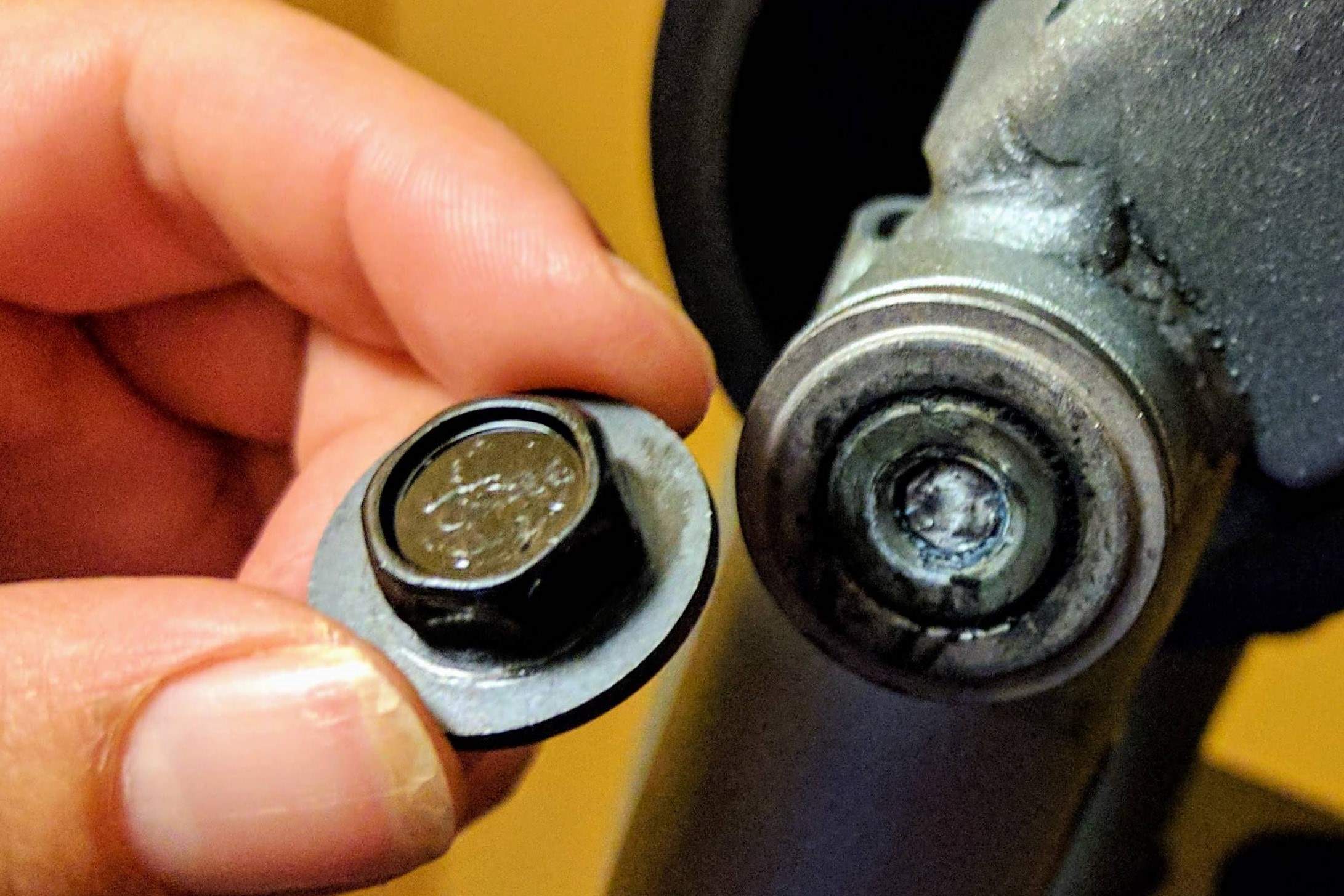Home>Home and Garden>How To Remove Turmeric Stains


Home and Garden
How To Remove Turmeric Stains
Published: March 3, 2024
Learn effective methods to remove turmeric stains from various surfaces at home and in the garden. Discover easy solutions for tackling stubborn turmeric stains.
(Many of the links in this article redirect to a specific reviewed product. Your purchase of these products through affiliate links helps to generate commission for Noodls.com, at no extra cost. Learn more)
Table of Contents
Introduction
Turmeric, a vibrant yellow spice commonly used in cooking and traditional medicine, has gained popularity for its numerous health benefits and rich flavor. However, its intense color can pose a significant challenge when it comes into contact with fabrics, countertops, or other surfaces. The stubborn nature of turmeric stains often leaves individuals seeking effective methods to remove them without causing damage.
In this comprehensive guide, we will explore various techniques and products for effectively eliminating turmeric stains. Whether you've accidentally spilled turmeric on your favorite shirt or encountered a stubborn stain on your kitchen countertop, this article will equip you with the knowledge and strategies needed to tackle the issue head-on. From utilizing common household items to considering commercial stain removers, we will delve into the most practical and efficient solutions for banishing turmeric stains.
Understanding the nature of turmeric stains and the surfaces they affect is crucial for implementing the most suitable removal methods. By gaining insight into the properties of turmeric and its interaction with different materials, you can approach stain removal with confidence and precision. Additionally, we will provide valuable tips for preventing turmeric stains in the first place, empowering you to maintain a clean and stain-free environment in your home.
Join us on this journey as we uncover the best practices and expert advice for conquering turmeric stains, ensuring that you are well-equipped to handle any staining mishaps that may arise. Let's dive into the world of turmeric stain removal and discover the most effective strategies for restoring the pristine appearance of your cherished belongings and surfaces.
Read more: How To Remove Bleach Stains
Understanding Turmeric Stains
Turmeric, a spice derived from the Curcuma longa plant, is renowned for its vibrant yellow color and potent staining properties. The active compound in turmeric, known as curcumin, not only contributes to its distinctive hue but also possesses strong dyeing capabilities. When turmeric comes into contact with various surfaces, such as fabrics, countertops, or cookware, its intense color can leave stubborn stains that are challenging to remove.
The staining process occurs when the curcumin molecules bind to the fibers or porous surfaces of materials, creating a lasting and visually prominent mark. Unlike some other types of stains, turmeric stains are particularly resilient due to the chemical composition of curcumin, which forms strong bonds with the affected surfaces. This characteristic makes turmeric stains notoriously difficult to eliminate, requiring targeted approaches to effectively lift the discoloration without causing damage.
Understanding the nature of turmeric stains involves recognizing their affinity for adhering to different materials. Fabrics, including cotton, silk, and wool, are highly susceptible to turmeric stains, as the porous nature of these materials allows the curcumin molecules to penetrate and bond with the fibers. Similarly, kitchen countertops, cutting boards, and utensils made of porous materials can also fall victim to turmeric stains, necessitating specialized cleaning methods to restore their original appearance.
Furthermore, the impact of turmeric stains extends beyond their visual presence, as they can also leave behind a lingering odor. The aromatic compounds present in turmeric can permeate fabrics and surfaces, resulting in a distinct and persistent scent that accompanies the stubborn stain. Addressing both the visual and olfactory aspects of turmeric stains is essential for achieving comprehensive stain removal and restoring the affected items to their pristine condition.
By gaining insight into the properties of turmeric and its interaction with different materials, individuals can approach stain removal with a deeper understanding of the challenges involved. This knowledge serves as the foundation for implementing targeted and effective removal methods, ensuring that turmeric stains are successfully eradicated without compromising the integrity of the affected surfaces.
Methods for Removing Turmeric Stains
When it comes to tackling turmeric stains, employing the right methods is essential for achieving successful stain removal without causing damage to the affected surfaces. Whether dealing with fabric, countertops, or cookware, there are several effective approaches to consider. Here are some tried-and-tested methods for removing turmeric stains:
Using Household Products
-
Vinegar and Baking Soda: Create a paste by mixing equal parts of vinegar and baking soda. Apply the paste to the stained area and allow it to sit for 15-20 minutes before gently scrubbing with a soft brush or cloth. Rinse thoroughly with water and repeat the process if necessary.
-
Lemon Juice: The acidic properties of lemon juice can help break down turmeric stains. Saturate the stained area with fresh lemon juice and allow it to sit for a few minutes before rinsing with cold water. For stubborn stains, repeat the process and let the fabric or surface air dry in direct sunlight.
-
Hydrogen Peroxide: Dilute hydrogen peroxide with water and apply it to the turmeric stain. Allow it to sit for a few minutes before rinsing with cold water. This method is particularly effective for white fabrics or light-colored surfaces.
Using Commercial Stain Removers
-
Enzyme-Based Stain Removers: Look for enzyme-based stain removers specifically designed for protein-based stains, such as turmeric. These products contain enzymes that target and break down the proteins in turmeric, making it easier to lift the stain from fabrics and surfaces.
-
Oxygen-Based Bleach: Oxygen-based bleach products can be effective in removing turmeric stains from white or colorfast fabrics. Follow the manufacturer's instructions for dilution and application, and always test the product on a small, inconspicuous area first.
Read more: How To Remove Grass Stains
Tips for Preventing Turmeric Stains
-
Immediate Action: Act quickly when a turmeric stain occurs. Blot the stain with a clean cloth to absorb excess turmeric and prevent it from setting into the fabric or surface.
-
Cold Water Rinse: Rinse the stained area with cold water as soon as possible. Avoid using hot water, as it can set the stain further.
-
Pre-Treating Fabrics: For clothing and linens, consider pre-treating the stained area with a stain remover or liquid detergent before laundering.
By incorporating these methods and tips into your stain removal routine, you can effectively combat turmeric stains and restore the pristine appearance of your fabrics, countertops, and cookware. With the right approach and a bit of persistence, conquering turmeric stains is indeed achievable.
Using Household Products
When it comes to removing turmeric stains using household products, several readily available items can serve as effective stain-fighting allies. These simple yet powerful solutions offer a natural and budget-friendly approach to tackling stubborn turmeric stains on fabrics and surfaces. Here are some tried-and-true methods for harnessing the stain-fighting potential of household products:
Vinegar and Baking Soda
The dynamic duo of vinegar and baking soda is renowned for its versatile cleaning capabilities, and it proves equally effective in combating turmeric stains. By combining equal parts of vinegar and baking soda to create a paste, you can harness the potent stain-lifting properties of these common household items. Once the paste is prepared, apply it generously to the turmeric-stained area and allow it to sit for 15-20 minutes. This dwell time allows the paste to penetrate the stain and begin breaking down the stubborn pigments. After the designated period, gently scrub the affected area with a soft brush or cloth, ensuring thorough coverage. Finally, rinse the treated area with water, and repeat the process if necessary to achieve the desired results.
Lemon Juice
The acidic nature of lemon juice makes it a formidable opponent against turmeric stains. Fresh lemon juice can be directly applied to the stained area, saturating the fabric or surface. As the lemon juice works its magic, its natural acidity helps to break down the pigments present in the turmeric stain. After allowing the lemon juice to sit for a few minutes, rinse the area with cold water to remove the loosened particles. For particularly stubborn stains, repeating the process and allowing the fabric or surface to air dry in direct sunlight can further enhance the stain-lifting effects of lemon juice.
Read more: How To Remove Deodorant Stains
Hydrogen Peroxide
Diluted hydrogen peroxide offers a gentle yet effective approach to tackling turmeric stains, especially on white fabrics or light-colored surfaces. By diluting hydrogen peroxide with water, you can create a solution that targets the stubborn pigments of turmeric without compromising the integrity of the affected material. Apply the diluted hydrogen peroxide to the turmeric stain and allow it to sit for a few minutes, enabling the solution to penetrate and lift the discoloration. Following the dwell time, rinse the area with cold water to remove the loosened particles and reveal the improved appearance of the fabric or surface.
By harnessing the stain-fighting prowess of household products such as vinegar, baking soda, lemon juice, and hydrogen peroxide, you can effectively combat turmeric stains and restore the pristine condition of your cherished fabrics and surfaces. These natural and accessible solutions empower you to address staining mishaps with confidence and efficiency, ensuring that turmeric stains are no match for the cleaning power of household products.
Using Commercial Stain Removers
In the quest to combat stubborn turmeric stains, commercial stain removers offer a potent and convenient solution for effectively lifting discoloration from fabrics and surfaces. These specialized products are specifically formulated to target and break down the resilient pigments present in turmeric, providing a reliable approach to stain removal. By harnessing the stain-fighting capabilities of commercial removers, individuals can achieve impressive results while minimizing the effort required. Here are some valuable insights into the world of commercial stain removers and their effectiveness in tackling turmeric stains:
Enzyme-Based Stain Removers
Enzyme-based stain removers stand out as a formidable choice for combating turmeric stains, particularly on fabrics. These products contain powerful enzymes that specifically target protein-based stains, such as those caused by turmeric. The enzymes work by breaking down the proteins present in the turmeric pigments, effectively loosening the stain from the fabric fibers. This targeted approach ensures that the turmeric stain is lifted without compromising the integrity of the fabric, making enzyme-based stain removers a reliable ally in the battle against stubborn discoloration.
Oxygen-Based Bleach
Oxygen-based bleach products offer a versatile and effective solution for removing turmeric stains from white or colorfast fabrics. These products harness the power of oxygen to penetrate the fabric and break down the pigments, resulting in the gradual lifting of the stubborn stain. When using oxygen-based bleach, it is essential to follow the manufacturer's instructions regarding dilution and application, ensuring that the product is used in a manner that maximizes its stain-lifting potential while safeguarding the fabric's color and texture. Additionally, conducting a patch test on a small, inconspicuous area of the fabric can provide assurance regarding the product's compatibility with the material.
By incorporating these commercial stain removers into your stain removal arsenal, you can effectively combat turmeric stains and restore the pristine appearance of your fabrics and surfaces. The targeted formulations and potent stain-fighting properties of these products make them valuable allies in the quest for comprehensive stain removal. Whether opting for enzyme-based stain removers or oxygen-based bleach, the use of commercial products offers a reliable and efficient approach to conquering turmeric stains, ensuring that your cherished belongings and fabrics remain free from the stubborn marks of turmeric.
Tips for Preventing Turmeric Stains
Preventing turmeric stains is a proactive approach that can save you from the hassle of dealing with stubborn discoloration. By implementing simple yet effective strategies, you can minimize the risk of encountering turmeric stains on your fabrics, countertops, and cookware. Here are valuable tips for preventing turmeric stains:
-
Immediate Action: Acting swiftly when a turmeric stain occurs is crucial in preventing it from setting and becoming more challenging to remove. As soon as a spill or stain occurs, grab a clean cloth and gently blot the affected area to absorb excess turmeric. This immediate action can help mitigate the extent of the stain and prevent it from deeply permeating the fabric or surface.
-
Cold Water Rinse: After blotting the turmeric-stained area, rinse it with cold water as soon as possible. Cold water can help dilute and remove the pigments before they have a chance to bind firmly to the material. Avoid using hot water, as it can inadvertently set the stain further, making it more resistant to removal.
-
Pre-Treating Fabrics: For clothing, linens, and other fabric items, consider pre-treating the stained area with a stain remover or liquid detergent before laundering. Pre-treating allows the cleaning agents to begin breaking down the turmeric pigments before the fabric undergoes a thorough wash, increasing the likelihood of successful stain removal.
-
Mindful Cooking and Handling: When working with turmeric in the kitchen, exercise caution to prevent spills and splatters. Use protective gear such as aprons and gloves to minimize direct contact with turmeric, reducing the likelihood of accidental stains on clothing and surfaces. Additionally, consider using designated utensils and cutting boards for handling turmeric to contain any potential mess.
-
Prompt Cleaning of Surfaces: If turmeric comes into contact with kitchen countertops, cutting boards, or other surfaces, promptly clean the area with a mild detergent and water. This proactive approach can prevent the turmeric pigments from adhering firmly to the surface, making it easier to remove the staining agents before they become entrenched.
By incorporating these preventive measures into your daily routine, you can significantly reduce the occurrence of turmeric stains and maintain the pristine appearance of your fabrics and surfaces. Proactive and mindful practices not only minimize the risk of staining but also contribute to a clean and well-maintained living environment. With these tips at your disposal, you can navigate the world of turmeric with confidence, knowing that you are equipped to prevent and address staining mishaps effectively.
Conclusion
In conclusion, the battle against turmeric stains requires a combination of knowledge, effective methods, and proactive measures. Understanding the nature of turmeric stains and their affinity for different materials is essential for implementing targeted removal strategies. Whether utilizing household products such as vinegar, baking soda, lemon juice, and hydrogen peroxide, or turning to commercial stain removers with specialized formulations, individuals have a range of options at their disposal for combating turmeric stains on fabrics and surfaces.
The versatility and accessibility of household products make them valuable allies in the fight against turmeric stains. From the dynamic cleaning duo of vinegar and baking soda to the natural acidity of lemon juice and the gentle yet effective properties of hydrogen peroxide, these everyday items offer effective and budget-friendly solutions for stain removal. By harnessing the stain-fighting potential of household products, individuals can address turmeric stains with confidence, knowing that they have powerful tools at their disposal.
Additionally, the availability of commercial stain removers, particularly enzyme-based formulations and oxygen-based bleach products, provides a convenient and targeted approach to tackling stubborn turmeric stains. These specialized products are designed to break down the resilient pigments of turmeric, offering a reliable solution for lifting stains from fabrics and surfaces. By incorporating commercial stain removers into the stain removal arsenal, individuals can enhance their ability to combat turmeric stains effectively and restore the pristine appearance of their belongings.
Furthermore, the implementation of preventive measures, such as immediate action, cold water rinsing, and mindful cooking and handling practices, can significantly reduce the likelihood of encountering turmeric stains. By adopting these proactive strategies, individuals can minimize the risk of staining and maintain a clean and well-maintained living environment.
In essence, the journey to conquer turmeric stains encompasses a multifaceted approach that combines knowledge, practical methods, and preventive measures. By equipping oneself with the insights and strategies outlined in this guide, individuals can navigate the realm of turmeric with confidence, knowing that they are well-prepared to prevent, address, and overcome the challenges posed by turmeric stains. With the right tools and techniques at their disposal, individuals can ensure that turmeric stains are no match for their proactive and informed approach to stain removal.












